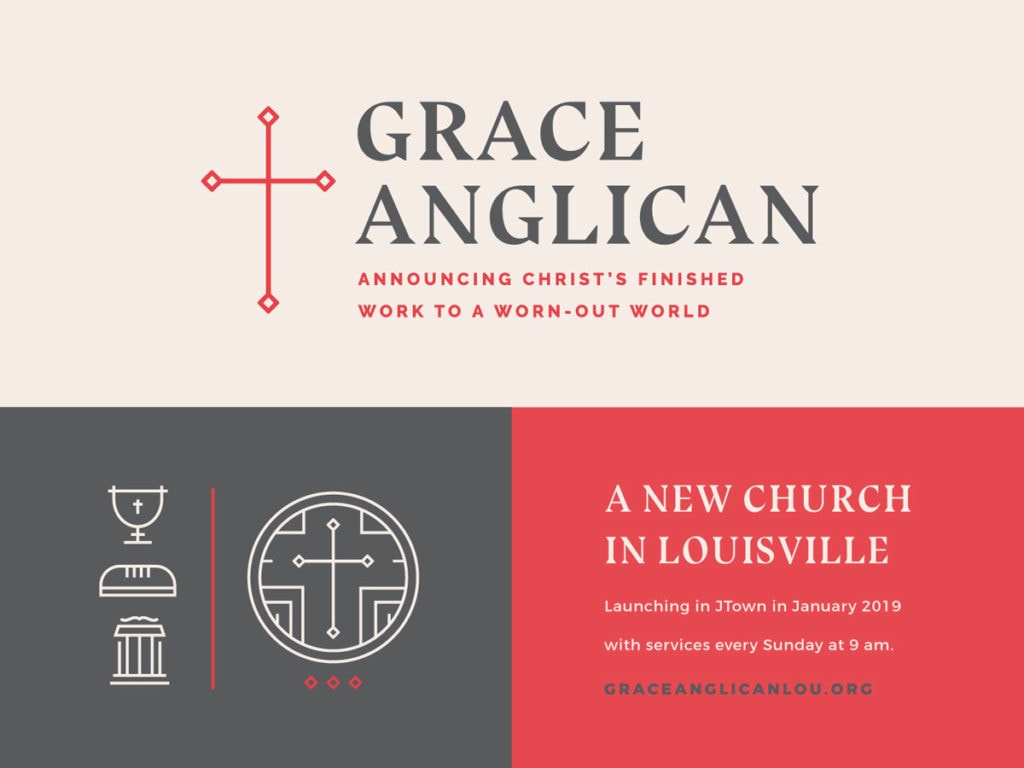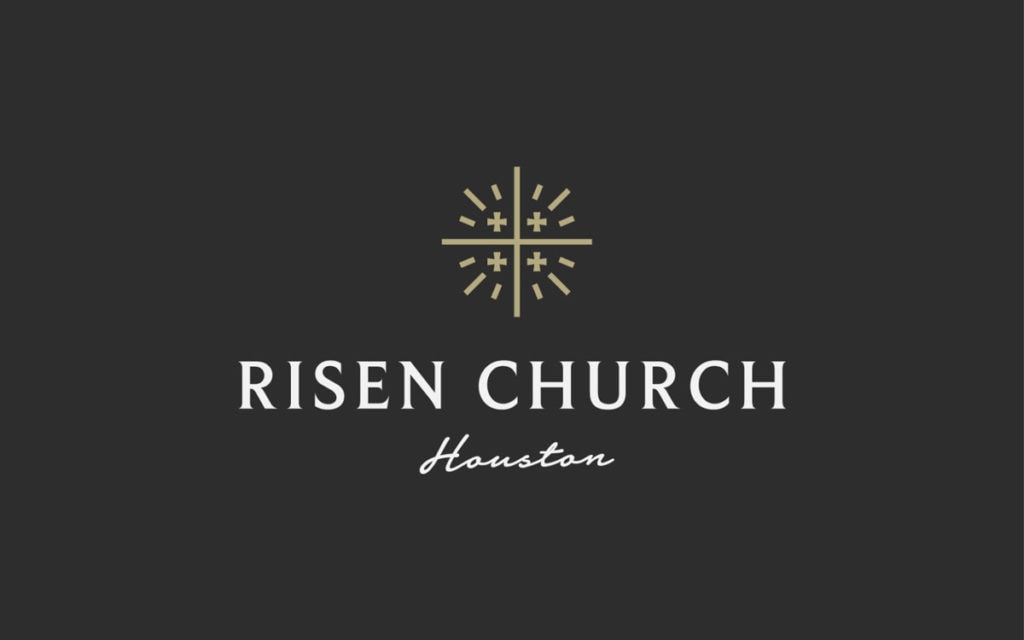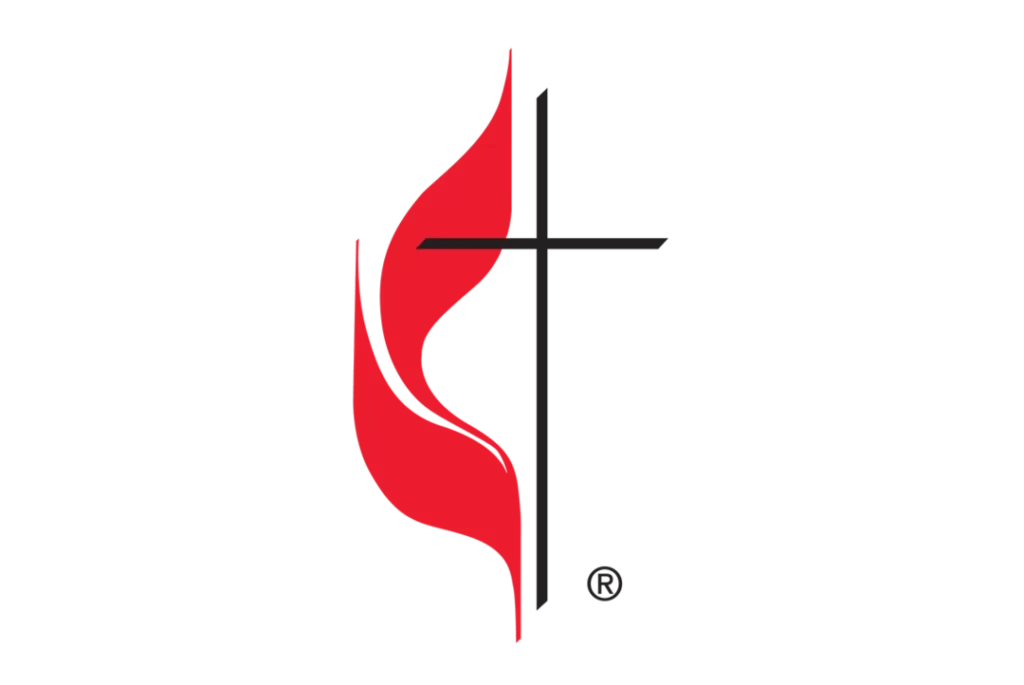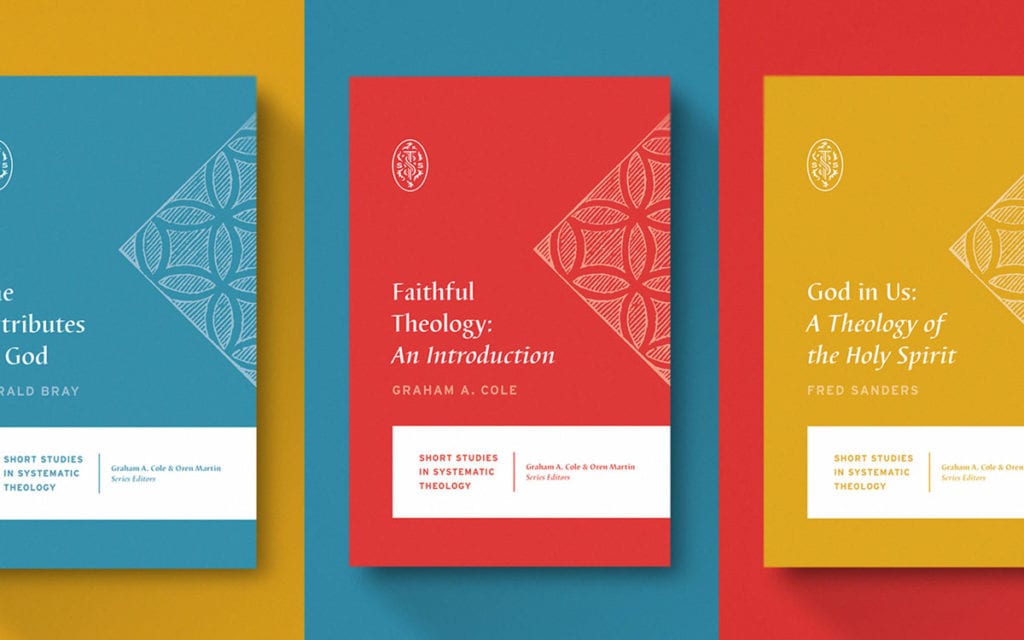Church Logo Design: Creating a Memorable Identity for Your Ministry
In the sea of nearly 380,000 registered churches in the United States alone, making your ministry stand out is no easy task. That's where a well-designed logo comes into play.
Did you know that it takes just 0.1 seconds for someone to form an impression of a logo and about 5-7 impressions to recognise it? That's a blink-and-you-miss-it window for your church to make its mark. A logo isn't just a pretty picture or a fancy font. It's a visual summary of who you are, what you stand for, and what seekers or your congregation can expect from your ministry. It's about creating an identity that resonates with your values and community.
In this post, we'll guide you through the exciting process of designing a church logo that captures the essence of your ministry and creates a memorable identity that will help your church stand out. From understanding the power of symbols to choosing the right colour palette, we'll cover all the bases. So whether you're starting a new ministry or rebranding an existing one, sit back, grab a cup of coffee, and dive in together.
Table of Contents
The Significance of a Strong Church Logo

A. Establishing a Memorable Identity
When it comes to building a solid church community, establishing a memorable identity is paramount. Much like the right church management software, a well-designed logo plays a crucial role in achieving this. It becomes the visual representation of your church's unique personality and sets you apart from other congregations. Think of iconic church logos like the cross and flame of the United Methodist Church or the simple yet powerful ichthys symbol used by many Christian denominations. These logos have become instantly recognisable, enabling people to connect with the church's values and mission at a glance.
B. Reflecting Core Values and Mission
Your church's logo should effectively communicate your core values and mission. Symbolism, colours, and typography all play a significant role in achieving this. For instance, a church focused on love and compassion may incorporate heart symbols or warm, inviting colours in its logo design. On the other hand, a church emphasising tradition and solemnity may opt for more classic typography and subdued hues. When these design elements align with your church's beliefs and purpose, your logo becomes a powerful visual representation of your identity.
C. Building Trust and Credibility
Trust and credibility are vital for any organisation, including churches. A well-designed logo can help establish trust in the minds of both members and the community. Research shows that 75% of consumers judge a company's credibility based on its visual identity. The same principle applies to churches. Seeing a professionally designed and thoughtfully crafted logo creates a positive perception and signals that your church is reputable and worthy of its trust. A visually appealing logo conveys professionalism and attention to detail, making a lasting impression on potential visitors and members.
Critical Considerations in Church Logo Design

A. Understanding the Target Audience
To create a logo that truly resonates with your congregation and community, it is essential to understand your target audience. Consider factors such as age, cultural background, and preferences. Audience research and gathering feedback can provide valuable insights into shaping the design process. For example, if your church primarily serves a younger demographic, you might incorporate more modern design elements or vibrant colours to appeal to their sensibilities. On the other hand, if your congregation consists of a diverse mix of age groups, finding a balance between traditional and contemporary design elements may be essential.
B. Embracing Simplicity and Timelessness
In logo design, simplicity is often crucial. A simple logo is more versatile, memorable, and adaptable across different platforms and sizes. Some of the most enduring symbols, like the Nike swoosh or the Apple logo, are incredibly simple yet instantly recognisable. Aim for a clean, uncluttered design that straightforwardly captures the essence of your church's identity. By embracing simplicity, your logo can stand the test of time, remaining relevant and practical for years.
C. Incorporating Symbolism and Meaning
Symbolism is a powerful tool in logo design, particularly for churches. Religious symbols hold deep meaning and can evoke a strong emotional response. Incorporating symbolism in your church logo can help convey your beliefs, values, and mission to the audience. Consider the universal symbols associated with Christianity, such as the cross, dove, or ichthys (fish). These symbols carry centuries of significance and resonate with people profoundly. By thoughtfully integrating symbolism into your logo design, you can create a visual representation that catches the eye and conveys the essence of your faith community.
Additionally, ensuring that the symbolism used is culturally appropriate and respectful is vital. Consider your congregation's diverse backgrounds and traditions and aim for symbols everyone can understand and appreciate. Balancing inclusivity and meaningful symbolism will help create a logo that fosters a sense of unity and acceptance.
D. Choosing Colours and Typography
Colours and typography are powerful elements that can evoke specific emotions and associations. When selecting colours for your church logo, consider their psychological impact and ability to convey the intended message. Warm colours like red, orange, and yellow evoke energy, passion, and joy, while cooler tones like blue and green communicate tranquillity, peace, and spirituality. Choose colours that align with your church's values and the emotional tone you wish to convey.
Typography, too, plays a crucial role in logo design. Different font styles evoke different moods and convey other messages. For instance, a script font might evoke a sense of elegance and tradition, while a bold sans-serif font can project strength and modernity. Ensure that the typography chosen for your logo is legible, visually appealing, and aligns with your church's overall message and personality.
E. Ensuring Versatility and Scalability
In today's digital age, designing a logo that works well across various platforms and sizes is essential. Your logo should be adaptable and retain its clarity and impact, whether displayed on a gigantic billboard or a small mobile screen. A responsive logo design allows seamless integration into websites, social media profiles, promotional materials, and signage.
Consider how your logo will appear in different formats, such as horizontal and vertical orientations, and test its scalability by resizing it to various dimensions. By ensuring versatility and scalability, your logo will maintain its visual impact and recognition regardless of where it's used.
Practical Tips for Creating an Impactful Church Logo

A. Collaboration and Consultation
Creating a logo accurately representing your church's identity requires collaboration and consultation. Involve key stakeholders in the design process, such as church leaders, members, and the wider community. Seek their input, ideas, and feedback to ensure the logo reflects your faith community's collective vision and values. Embracing diverse perspectives can lead to a more prosperous and inclusive design outcome.
However, it's crucial to manage the design feedback process effectively. Assign a small team or committee to review and consolidate the feedback received and use it as a guide for making informed design decisions. Ultimately, the goal is to create a logo that resonates with your congregation while capturing the essence of your church's identity.
B. Working with Professional Designers
While designing a logo in-house is possible, engaging a professional designer or design agency can bring valuable expertise and experience. Design professionals understand the principles of effective branding and can help translate your church's vision into a visually compelling logo.
When selecting a designer, look for someone with experience in logo design and a portfolio that aligns with your aesthetic preferences. Clear communication and a shared vision are crucial during the design process. Provide the designer with a comprehensive brief that outlines your church's values, mission, target audience, and any specific design preferences you may have. This will help the designer create a logo that accurately reflects your church's identity and resonates with your congregation.
C. Iterative Design Process
Logo design is an iterative process that involves multiple stages of brainstorming, sketching, and refinement. Start by generating design concepts and exploring different visual elements, symbols, and typography options. Encourage creative thinking and allow for experimentation during this stage.
Narrow down the options based on feedback and initial impressions. Refine the selected designs by focusing on details, proportions, and balance. Test the logo in different sizes and contexts to ensure its visual impact remains consistent.
Throughout the process, remember that simplicity and clarity are essential. Avoid overly complex designs that may be difficult to reproduce or recognise. Aim for a visually appealing, easily recognisable logo that aligns with your church's values and mission.
D. Testing and Feedback
Before finalising your church logo, gathering feedback and testing its effectiveness is crucial. Share the design with a representative sample of your target audience, including members of your congregation and individuals from the community. Ask for their honest opinions and impressions. Consider organising focus groups or conducting online surveys to gather more feedback.
Pay attention to the insights and suggestions provided during the testing phase. Use this feedback to refine and make any necessary adjustments to the logo design. Strive for a logo that resonates with your audience and effectively communicates your church's values and mission.
E. Adapting to Digital Platforms
Optimising your church logo for online platforms and social media is essential in today's digital landscape. Your logo will be displayed across various digital channels, including websites, social media profiles, and digital advertisements. Ensure that your logo looks clear and legible, even in smaller sizes.
Consider creating versions of your logo specifically tailored for digital use. Simplify the design if necessary, remove any intricate details that may not be visible at smaller sizes, and ensure that the logo retains its impact and readability. Responsive logo design is crucial to maintaining a consistent visual identity across digital platforms.
By adapting your church logo for digital platforms, you can effectively reach and engage with a broader audience, expanding the reach of your ministry.
Showcasing Inspiring Church Logos
A. Case Studies: Successful Church Logo Designs
Analysing successful church logo designs can provide valuable insights and inspiration for your logo creation. Let's explore a few examples:
United Methodist Church: The cross and flame logo of the United Methodist Church is instantly recognisable and represents the merging of two denominations. The logo combines the cross symbol, representing Christ's sacrifice, with the flame, symbolising the Holy Spirit's presence and transformative power.

Hillsong Church: The Hillsong Church logo is a simple yet impactful design. Using a modern script font, it features the name “Hillsong” in bold, handwritten letters. The logo's simplicity allows the focus to be on the name itself, creating a solid brand presence and recognition.

NorthStar: They've nailed it with a subtle design that uses negative space well. It's all about simplicity, and they've hit the mark. They've used a no-fuss font in two different weights, which adds a nice touch. What's remarkable is that they've also incorporated symmetry by aligning everything in the centre. It gives the logo a balanced look that catches the eye.

B. Exploring Trends and Innovations
Logo design trends continue to evolve, and staying informed about current practices is essential while maintaining a timeless appeal. Here are a few trends and innovations worth exploring:
- Minimalism: Minimalist logo design focuses on simplicity, clean lines, and minimal embellishments. This approach creates a timeless and versatile logo that can adapt to various mediums and sizes.
- Hand-drawn Elements: Incorporating hand-drawn elements adds a personal touch and a sense of authenticity to a logo. Hand-drawn elements can convey warmth, creativity, and a more intimate connection with your congregation.
- Geometric Shapes: Geometric shapes, such as circles, triangles, and squares, can create visually striking and symmetrical logos. These shapes can convey balance, harmony, and stability.
- Negative Space: Utilising negative space in logo design can create clever and memorable visual representations. By cleverly incorporating hidden symbols or shapes within the logo's negative space, you can add depth and intrigue to your design.
C. Nurturing Brand Consistency
Once you have created a compelling church logo, nurturing brand consistency is essential. Consistency across all your visual elements, including your logo, helps create a cohesive and recognisable brand identity. Consider developing a brand style guide that outlines guidelines for logo usage, colour palettes, typography, and overall visual aesthetics.
By adhering to consistent branding, your church will create a solid and unified image, allowing members and the community to quickly identify and connect with your ministry. Consistency builds trust and familiarity, strengthening your church's impact and influence.
The Future of Church Logo Design

A. Evolving Design Trends and Technology
As technology advances and design trends evolve, the future of church logo design holds exciting possibilities. From motion logos to interactive branding experiences, new avenues are emerging that can enhance how churches communicate their message visually.
Motion logos, animated versions of logos, bring life and dynamism to the design. Motion logos can capture attention and create a memorable visual experience through subtle movements or transitions. This trend is particularly effective in digital media, where movement can grab the viewer's attention and enhance engagement.
The advent of virtual reality (VR) and augmented reality (AR) opens up new frontiers for church branding. Imagine a logo that can be experienced in a 3D virtual environment, allowing users to explore and interact. AR technology can also be utilised to bring the logo to life in the physical world through smartphone or tablet apps, providing an immersive and interactive experience.
B. Harnessing the Power of Storytelling
Storytelling has always been at the heart of religious and spiritual practices. In logo design, integrating storytelling elements can create a deeper connection with your audience. Rather than relying solely on visual symbols, consider incorporating narrative-driven elements that encapsulate the story and values of your church.
A logo that tells a story can evoke emotions, spark curiosity, and foster a sense of community. It visually represents your congregation's shared journey and experiences, enabling viewers to connect with your church more deeply.
C. Fostering Inclusivity and Diversity
Inclusivity and diversity have become increasingly important in society, extending to logo design. Churches embrace the importance of representing and welcoming individuals from diverse backgrounds and communities. When designing a church logo, create an inclusive visual representation that resonates with many people.
Consider incorporating elements that reflect your congregation's diverse cultures, traditions, and experiences. This can be achieved through inclusive symbols, diverse colour palettes, or typography honouring different languages and scripts. By fostering inclusivity and diversity in your church logo, you send a powerful message of acceptance and openness to all.
Conclusion
A well-designed church logo goes beyond aesthetics. It captures the essence of your church's identity, communicates its values and mission, and fosters trust and recognition within your congregation and the wider community. By understanding the significance of a strong logo, considering key design elements, and following practical tips, you can create an impactful and meaningful logo that resonates with your audience.
Remember to embrace simplicity and timelessness, incorporate symbolism and meaning, choose colours and typography that align with your church's values, and ensure versatility and scalability for digital platforms. Collaborating with professional designers, engaging in an iterative design process, and gathering feedback are vital steps in creating an impactful logo.
By showcasing inspiring church logos and exploring current trends and innovations, you can gather inspiration and stay ahead of the curve in logo design. Nurturing brand consistency across all visual elements establishes your church's solid and unified identity.
Looking toward the future, the evolving design trends and technology present exciting opportunities for church logo design. Motion logos, virtual reality experiences, and storytelling elements can enhance your logo's visual impact and engagement. Fostering inclusivity and diversity in your logo design reflects your church's commitment to welcoming all individuals.
A well-designed church logo is a powerful symbol representing your church's values, mission, and sense of community. It becomes a visual identifier that leaves a lasting impression on members and the wider audience. Embrace the art of church logo design, leverage its potential, and create a memorable identity that has resonated with your ministry for years.
